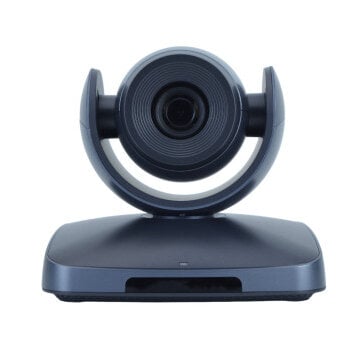PTZ Camera

PTZ (Pan-Tilt-Zoom) camera is a type of camera that can automatically turn toward the speaker, following preset positions with the help of a rotary mechanism. PTZ cameras are capable of rotating, tilting, and zooming thanks to specialized mechanical and electronic drives. They are equipped with variable focal length lenses and provide a wide field of view through their built-in rotation mechanism.
A controlled 4K PTZ camera is an integral part of modern surveillance systems and is used for both indoor and outdoor monitoring. In video conferencing, PTZ cameras play a crucial role, serving as an essential element of any conference or meeting room.
The Key Features of a PTZ Camera
-
The image quality of a PTZ camera is ensured by a CCD sensor, while color reproduction largely depends on the size and quality of that sensor.
Some PTZ cameras are capable of delivering high-quality recordings even in low-light environments: a feature especially valuable for video conferencing, as many meeting rooms are poorly equipped in terms of lighting.
- PTZ cameras support a varying number of preset positions, ranging from just a few to more than one hundred. The greater the number of presets, the more flexibility and convenience the camera provides.
- A PTZ camera should offer a wide tilt and rotation range at maximum speed to capture every angle of the room efficiently.
- PTZ cameras can be mounted on the ceiling, wall, or placed on a desktop using dedicated mounting brackets, allowing for versatile placement in any meeting space.
- PTZ functions (panning, tilting, and zooming) can be operated via various interfaces such as IR remotes, hardware controllers, or integrated touch panels.
- Most PTZ cameras support an alarm feature that is triggered by changes in illumination within a monitored area, adding an extra layer of security.
A PTZ camera can be directed toward an individual speaker during a video conference or used to capture the entire meeting room with the help of optical zoom and servo control.


Follow us on social networks